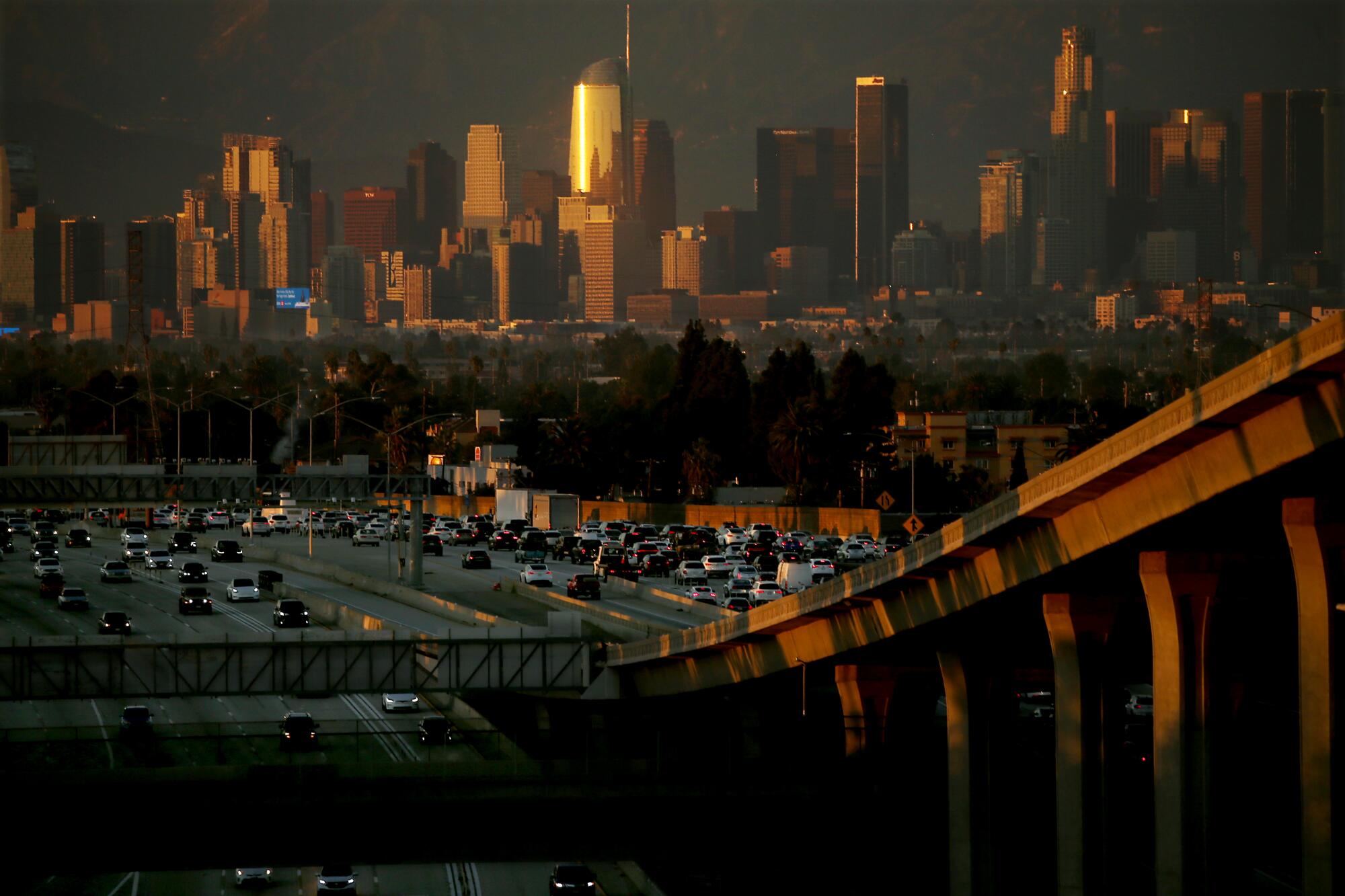
- Share via
Federal prosecutors in Sacramento on Thursday unsealed an indictment charging 12 people from around the state with violating the Clean Air Act in what they portrayed as a long-running, sophisticated and surprisingly widespread scheme to cheat on smog tests.
The defendants “polluted the air we breathe for their own profit and harmed the health of Californians,” U.S. Atty. Phillip Talbert said in a statement. All 12 were arrested at their homes Thursday morning and will be arraigned in court at a later date, a spokesperson said. They face up to five years in prison if convicted.
California requires most cars to pass a smog emissions inspection every two years. But for as long as California has had those rules, which were instituted decades ago, there have been car owners who despaired that their cars wouldn’t pass the tests, and unscrupulous smog check operations willing to help them cheat.
In the old days, cheating at a smog test was easy: A smog operation (there are approximately 7,000 in California) would just sign off. To combat that, California made it harder to defraud, by developing software that prevented such trickery.
Starting about a decade ago, officials allege, a sophisticated criminal ring developed and marketed a machine that tricked the state’s software to “pass vehicles that would otherwise fail California’s smog inspections.”
The federal regulations don’t mandate electric trucks or school buses, unlike California’s tougher standards. But the EPA’s rules will curtail a billion tons of greenhouse gas emissions each year.
The conspiracy went on for a decade, the indictment alleges, starting in 2015, when a smog shop operator in Hawthorne, Hossam “Sam” Hemdan, began selling a line of devices known as “OBDNators” which enabled failing cars to pass smog tests.
Hemdan, who owns several smog repair stores around Southern California, could not be reached for comment, nor could his representatives.
The indictment said that as early as 2013, Hemdan hired programmers and designers to help him develop the device. He allegedly sold an early version to a smog shop operator in Anaheim in December of 2015 for $9,500.
By 2019, the indictment said, Hemdan had developed a “stand alone” device, by which a car owner could pass a “smog check” with their vehicle identification number alone — they didn’t even have to take their car down to the smog check station.
That device, the indictment said, cost around $18,000. (A fake passing grade on a smog test from one of the devices, meanwhile, could be had on the black market for between $120 and $300, according to the indictment; a real smog check is usually about $50.)
The devices were apparently popular among some smog shop operators. Hemdan was allegedly organizing in-person classes so new owners of the devices could learn to operate them. “Make sure everyone come to the class monday mostly about the new n8tr and running the new software and operation other wise u will miss a lot,” Hemdan texted to a group of smog check operators in July of 2019, according to the indictment.
The U.S. EPA is planning to reject Southern California’s plan to reduce smog, which called for the federal government to take more action.
By 2020, the network appeared to have cornered the market on cheating smog tests, according to the indictment, which said that “virtually all sophisticated simulator devices” found by investigators during the inspection of smog stations were from Hemdan’s product line.
Officials have said they have no way of knowing how many pollution-spewing cars are operating on California roads as a result of the ring. But some signs suggest the number is not insignificant. In 2023, only 7% of the 10.7 million cars that went to smog check stations failed their tests. But random roadside tests carried out by the Bureau of Automotive Repair posted a failure rate of 13.5%.
“The scheme here was organized and deliberately designed to deceive and falsify emissions testing across California,” EPA Criminal Investigation Division Special Agent in Charge Kimberly Bahney said in a statement, adding: “Vehicle emissions testing is fundamental to protect air quality.”
The indictment does not reveal how investigators cracked the alleged fraud ring, but it does reveal that they obtained encrypted group text messages and watched the alleged conspirators try to evade detection.
Between 2018 and 2022, the Bay Area’s carbon emissions fell by 1.8% each year, which Berkeley researchers attribute to drivers switching to electric vehicles.
On Jan. 16, 2020, for example, one of the group sent a text message to a group chat with 35 people in it, warning that law enforcement was rumored to be conducting inspections at smog shops in the Inland Empire that day, according to the affidavit.
An hour and a half later, Javier Salguero, who owned and controlled several smog shops including one in Bell and two in Maywood, wrote in the group chat that law enforcement was at one of his shops with a search warrant. “Cops, fbi at my shop,” he allegedly texted. “Watch yourselves.”
A few months earlier, he had chatted in a group text about needing to work together to avoid getting caught, and said they should consider pooling resources to put an attorney and a consultant on payroll. “Organized crime is the only way,” he joked.
Neither Salguero nor his representatives could be reached for comment.
Nathaniel Le, the assistant special agent in charge of the FBI’s Sacramento Field Office, said that the arrests were a result of a five-year investigation by the FBI, the U.S. EPA, the U.S. attorney’s office and the California Bureau of Automotive Repair.
In a statement, he pointed out how sophisticated the smog-check-cheating device was. “Because of these devices and the falsified data they provide, many cars that could not pass emissions testing are still on the streets of California.”
Toward a more sustainable California
Get Boiling Point, our newsletter exploring climate change, energy and the environment, and become part of the conversation — and the solution.
You may occasionally receive promotional content from the Los Angeles Times.










